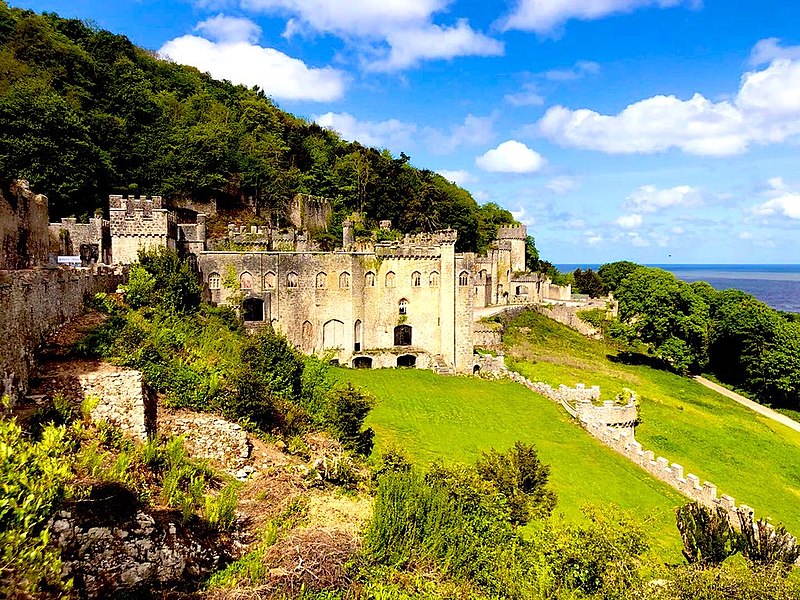Between 1939 and 1941, Gwrych Castle in Abergele, Conwy, hosted around 200 Jewish refugees aged between 12 and 17 who had fled from Nazi-occupied Europe. The castle was organised into a hachshara (agricultural training centre), which were originally set up in Germany by Zionist organisations such as Youth Aliyah and Bachad to prepare youth for agricultural work in Palestine. Following persecution in Germany, approximately 20 hachsharot were relocated to Britain between 1939 and 1945, with Gwrych Castle the largest. Youth Aliyah sponsored around 500 children to come to Britain as Kindertransportees, but many other refugees requested or were sent to hachsharot on arrival. The numbers later included 43 young people who were formerly at another hachshara at Llandough Castle in Glamorgan, who were evacuated after it was requisitioned by the government.
Use of the castle was offered for free by the owner, Lord Dundonald, since it was in very poor condition. Facilities were extremely limited, with only a few rooms inhabitable, and the occupants had to dig field toilets after a couple of weeks. Cooking was achieved through an antique stove that smoked continuously, leading to some cases of carbon dioxide poisoning. The water pump, which used water from the Abergele supply, wasn’t powerful enough to provide for 200 people, meaning children had to run down to the kitchen and carry pails of water back up to their washrooms. Eventually, conditions improved, and the children and staff set up work brigades to tackle DIY and maintenance issues.

Children at Gwrych Castle divided their time between agricultural work and study, alongside working for local businesses and farms. There were also leisure pursuits, including football, table tennis, and parties.
Herman Rothman was a child refugee at Gwrych Castle. In this interview, recorded for the IWM in 2008, he gives an account of what life was like at the hachshara:
Arieh Handler, the lead organiser of the hachshara, remembered that the children “had no difficulty in making friends with the locals, the shopkeepers, artisans and in particular with the farmers in the surrounding area. Many had no idea what we were doing in Abergele, who we were, where we came from and why we occupied Gwrych Castle.”
In 1941, the hachshara was wound down after work in the surrounding area became scarce and many of the staff and older teenagers were interned as enemy aliens. The remaining young people were transferred to smaller centres at Ruthin, St Asaph and Rossett. According to a survey carried out by The Association of Jewish Refugees in 2007, 12 of 22 children surveyed remained in the UK after the war, with five emigrating to Palestine and four to elsewhere.
Further reading
Gwrych Castle Year Book 1939/40 (Wiener Holocaust Library, OSP3600)
Deborah Katz, ‘Little-Known Holocaust History: Fleeing Germany, Then Living In A British Castle’, Jewish Press, 30 May 2019 (https://www.jewishpress.com/sections/features/fleeing-germany-then-living-in-a-british-castle/2019/05/30/)
Cai Parry-Jones, The Jews of Wales: A History (Cardiff: University of Wales Press, 2017)